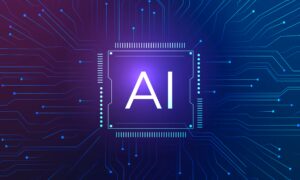By Al Kingsley
Traditionally, IT professionals and educators have interpreted the lifespan of technology to mean how long certain hardware – including laptops, tablets, servers, routers, and smartphones – will last. But now that AI is more readily available and being integrated into nearly every business process, the pace of turning over technology has accelerated beyond our ability to easily manage it.
Not only do we need to account for the physical lifespan of technology, now we need to include the type and capabilities of the computing power running the technology.
Recent advances in generative AI and large language models such as ChatGPT have pushed the capabilities of AI farther than many had envisioned they would be at this point. Quite simply, today’s artificial intelligence is upending not only the definitions of what AI is, but also definitions of other technologies.
From the Internet, to distributed computing, to smart phones, to the cloud, to digital transformation and disruption, we have experienced no shortage of life-altering technological advances. The pace of change is now increasing in part because AI has the capability to recognize and adapt to data patterns faster than humans. New AI releases will accelerate those abilities, and enable us to make connections we hadn’t thought of before.
Organizations therefore need leaders who have vision, who aren’t afraid of uncertainty, who can recognize new potential and understand that the tech used in their organizations might have a much shorter lifespan than it ever did before. That means taking stock of what you have now and determining if it is providing full value, or should be updated or replaced.
Then, as the lifespan of technologies continues to shrink under upgrades and advances driven by AI, it becomes increasingly important to rethink how companies invest in and manage their tech. Put simply, the IT leader must now be a digital visionary and a master and leader of change management. Rapid change. The reason is simple: Virtually everything we now do with technology will be impacted by advances in AI.

Al Kingsley, CEO of NetSupport
Technology advances call for smarter leadership
To manage these rapid tech advances, the number one factor to consider is the capacity of individuals. That capacity starts with having breadth of leadership. Breadth is not about the capabilities of one person. It’s about having lots of different people who provide the capacity – with their combined particular skill sets – to unlock different markets and mindsets, and who can manage new technologies to address those markets and mindsets.
Case in point: Our workforce is increasingly distributed, and we need to support devices and machines that are all geographically disparate. There are relevant tools built into many operating systems to achieve this, but flexibility is needed to be able to provide cohesive support to workers today.
For some tech and business leaders, however, flexibility is a difficult notion to embrace and even more difficult to employ. Organizations may be slow to embrace change unless forced to do so by their competition. One lesson everyone learned during the pandemic was the need to be flexible and agile in order to succeed and thrive. How do we capture that on-the-edge mindset and keep it going in this age of disruption?
After 30 years at the helm of a global technology company, I find that having an edge doesn’t necessarily mean embracing all of the latest and greatest tech gadgets and software. Rather, it often means smarter use of the technology already in place, while using data to drive better decisions.
Accepting that disruption is manageable – even desirable – means that you can recognize when processes or technologies need to be tossed. Just because something has existed for years doesn’t mean that it is all still relevant or purposeful. We tend to hang on for fear of the unknown.
Also, given that the priorities of workers today are much more focused around ease-of-use and personal flexibility, a technology solution with the most features isn’t always the best solution. In fact, complexity can often counter usability.
Tech leaders embrace the role of change leader
It is no secret that CIOs today are embroiled in a world of change. Organizations are counting on them to lead the way through the confusion. The rapid evolution of AI is adding to the challenge, changing how we find, interpret and act on data, on patterns and on trends. That will lead to sweeping changes in what we do with data and how we invest in technology to capture, create, and share it.
Operating systems will change. Hardware needs will change. Every industry will be impacted. We probably haven’t even begun to realize what the new technology needs will be because AI is going to take us to places that we hadn’t considered before.
Tech leaders realize the priority to understand and embrace their changed role. Consider key findings of the 2023 State of the CIO Survey from International Data Group/Foundry:
- 85% of CIOs agree that the CIO is becoming a change maker, increasingly leading business and technology initiatives
- 85% of CIOs say that their role is becoming more digital- and innovation-focused
- 84% of CIOs are more involved in leading digital transformation initiatives compared with their business counterparts
The bottom line is that tech leaders are being asked to be directly involved in strategic business decisions. Respondents to the CIO survey above confirm this. The top five areas these CIOs are being asked to focus on are: driving business innovation; redesigning business processes; modernizing infrastructure and applications; aligning IT initiatives with business goals; developing and refining business strategy.
Given how CIOs are being tasked, organizations not only need a strong change management program, they need robust and innovative change leadership and AI is driving this. Progressive, valuable CIOs show they are up to the task by identifying how technology addresses business needs and opportunities, and by driving organizational change. They must convince boards, business line managers, and direct reports about the new technology and new mindsets within their organization, including which are doable and how those changes contribute to growth and revenue.
Al Kingsley is the CEO of NetSupport. He is an author, podcaster, chair of Multi Academy Trust cluster of schools in the UK, Apprenticeship Ambassador, and chair of his regional Special Educational Needs and Disabilities Board. And has written books on ed tech, governance and school growth.
































